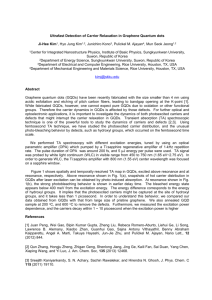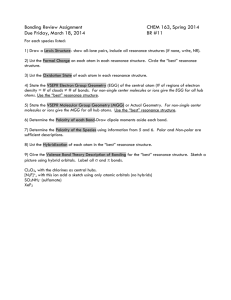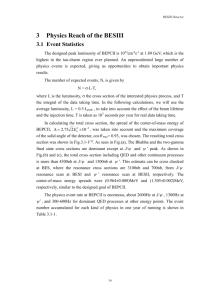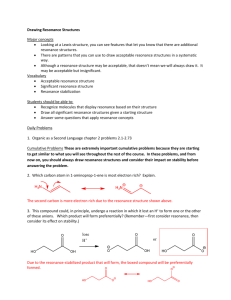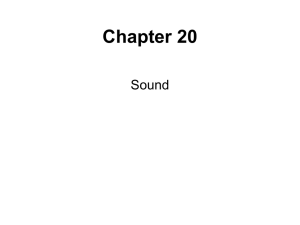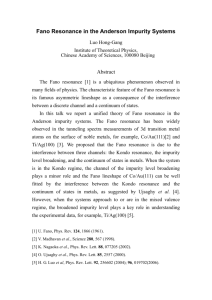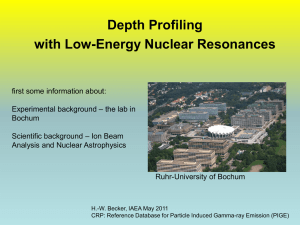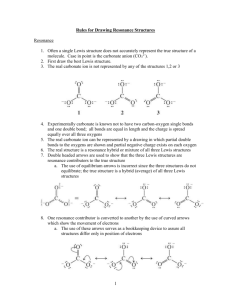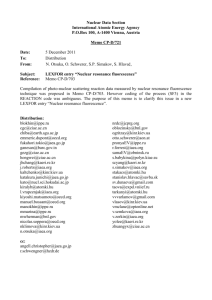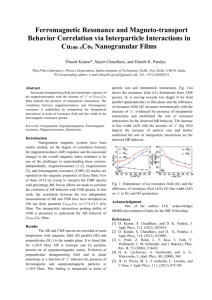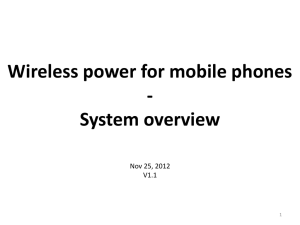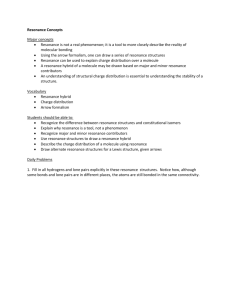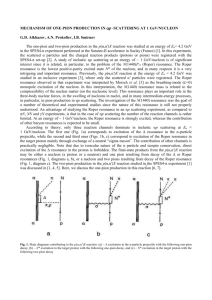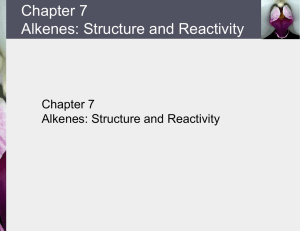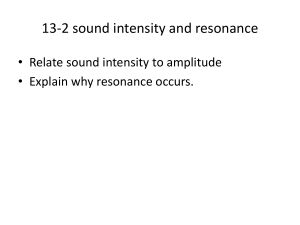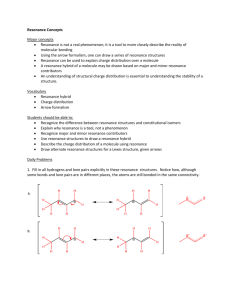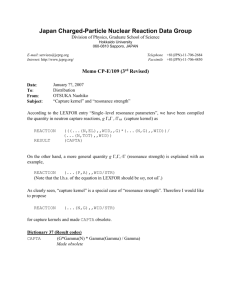Template 2 - icdvc2014.org
advertisement
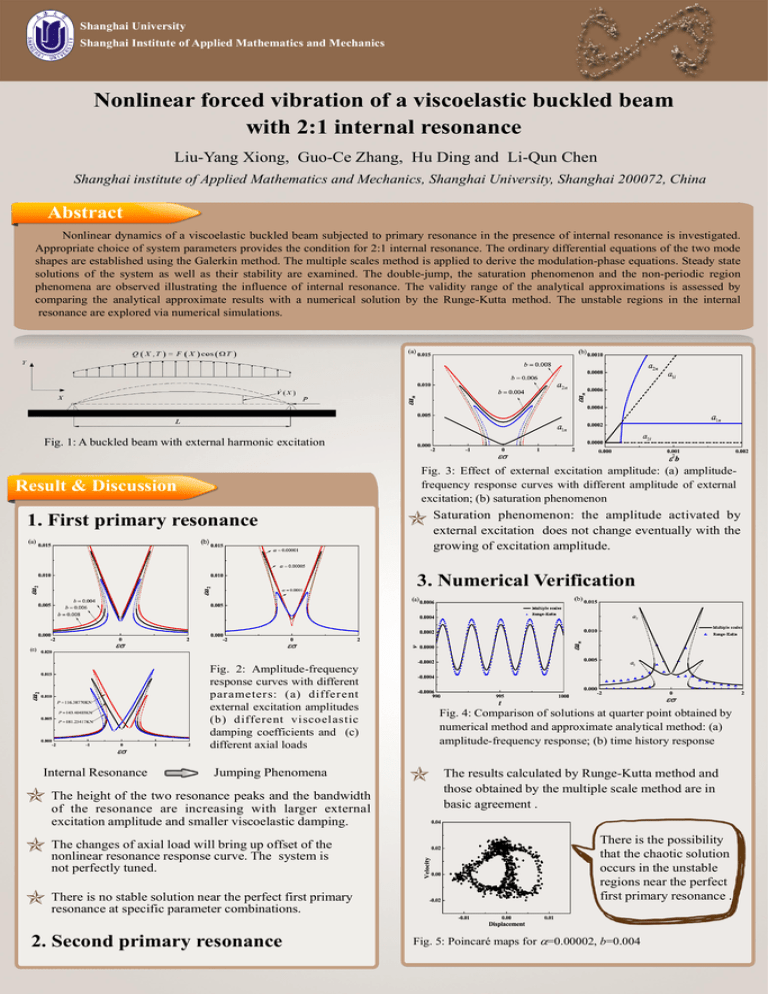
Shanghai University Shanghai Institute of Applied Mathematics and Mechanics Nonlinear forced vibration of a viscoelastic buckled beam with 2:1 internal resonance Liu-Yang Xiong, Guo-Ce Zhang, Hu Ding and Li-Qun Chen Shanghai institute of Applied Mathematics and Mechanics, Shanghai University, Shanghai 200072, China Abstract Nonlinear dynamics of a viscoelastic buckled beam subjected to primary resonance in the presence of internal resonance is investigated. Appropriate choice of system parameters provides the condition for 2:1 internal resonance. The ordinary differential equations of the two mode shapes are established using the Galerkin method. The multiple scales method is applied to derive the modulation-phase equations. Steady state solutions of the system as well as their stability are examined. The double-jump, the saturation phenomenon and the non-periodic region phenomena are observed illustrating the influence of internal resonance. The validity range of the analytical approximations is assessed by comparing the analytical approximate results with a numerical solution by the Runge-Kutta method. The unstable regions in the internal resonance are explored via numerical simulations. Fig. 1: A buckled beam with external harmonic excitation Fig. 3: Effect of external excitation amplitude: (a) amplitudefrequency response curves with different amplitude of external excitation; (b) saturation phenomenon Result & Discussion 1. First primary resonance Saturation phenomenon: the amplitude activated by external excitation does not change eventually with the growing of excitation amplitude. 3. Numerical Verification Fig. 2: Amplitude-frequency response curves with different parameters: (a) different external excitation amplitudes (b) different viscoelastic damping coefficients and (c) different axial loads Internal Resonance Jumping Phenomena The height of the two resonance peaks and the bandwidth of the resonance are increasing with larger external excitation amplitude and smaller viscoelastic damping. The changes of axial load will bring up offset of the nonlinear resonance response curve. The system is not perfectly tuned. There is no stable solution near the perfect first primary resonance at specific parameter combinations. 2. Second primary resonance Fig. 4: Comparison of solutions at quarter point obtained by numerical method and approximate analytical method: (a) amplitude-frequency response; (b) time history response The results calculated by Runge-Kutta method and those obtained by the multiple scale method are in basic agreement . There is the possibility that the chaotic solution occurs in the unstable regions near the perfect first primary resonance . Fig. 5: Poincaré maps for =0.00002, b=0.004
